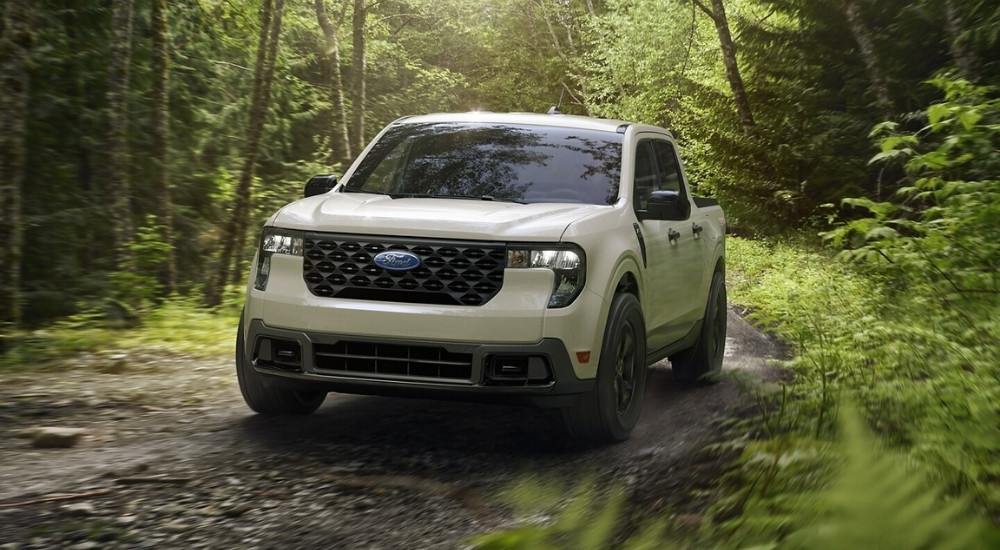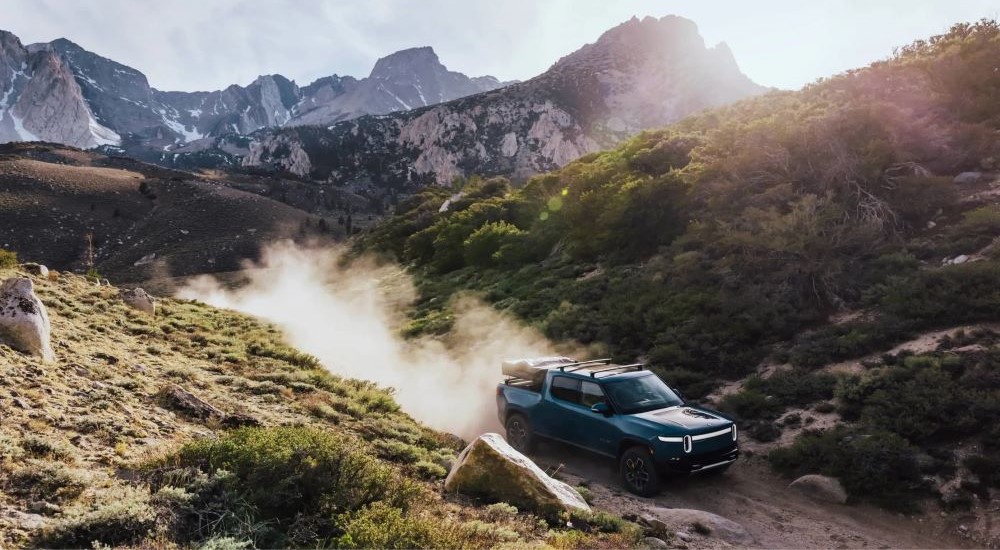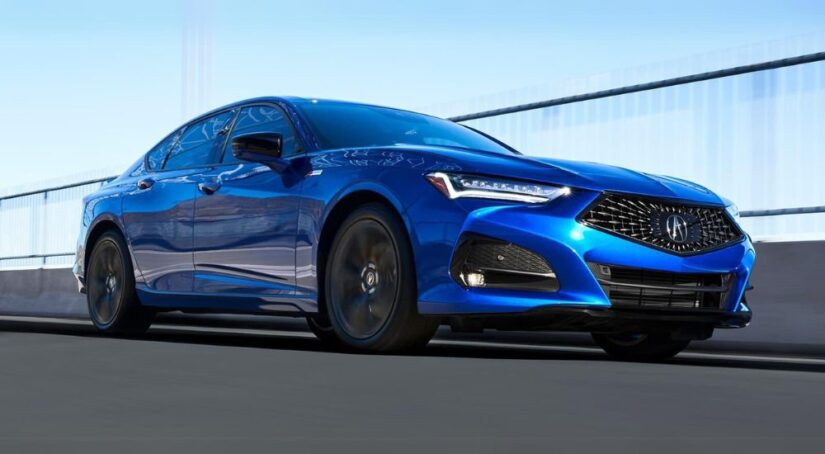All-wheel drive (AWD) is an increasingly common powertrain option for everything from commuter compacts to crossover SUVs to sports cars. As an alternative to four-wheel drive (4WD) and two-wheel drive (2WD), it automatically divides the powertrain torque between the front and rear wheels based on road conditions. It provides excellent traction in foul weather and on twisty roads and can give drivers solid light and mid-duty off-road capabilities.
However, there are multiple ways to divide that torque, including limited-slip center differentials (both passive and electronic) as well as on-demand couplings. Twin-clutch all-wheel drive systems have become more widespread in recent years, with production vehicles ranging from the Acura TLX to the former Ford Focus RS adopting the racing-inspired design. Should you consider seeking out a twin-clutch AWD vehicle? This guide looks at how twin-clutch AWD works, the pros and cons of twin-clutch AWD, and some of the vehicles that currently utilize it.
What Is a Twin-Clutch AWD System?
A twin-clutch AWD system, also known as a torque vectoring system, is a more advanced version of traditional AWD, and uses an electronic clutch pack to progressively engage or disengage individual wheels. Unlike a mechanical limited-slip differential, which only activates when it senses wheel slippage (hence the name), these clutch packs can engage based on factors like engine speed and steering angle. Twin-clutch AWD takes AWD to the next level by using one clutch pack on each rear axle half-shaft. These packs can be engaged simultaneously like traditional AWD or engaged independently, meaning a different amount of torque is sent to each wheel. This provides more precise actuation and control in all conditions.
Note: Twin-clutch AWD systems differ from dual-clutch transmissions, which have different clutches for the odd and even gears to make shifting more efficient. A vehicle can have one or the other or both, though the dual-clutch transmission is far more prevalent.
What Are the Benefits of Twin-Clutch AWD?
If you’ve never used twin-clutch AWD or even heard of it before now, you’re probably wondering what the fuss is. Here are the best things about torque vectoring:
- Twin-clutch systems can fully lock to work like a four-wheel drive system without binding, giving you smoother performance on rough terrain and slippery roads. Furthermore, the system will still allow some adjustments as conditions change.
- The independent clutch engagement simultaneously improves cornering and acceleration out of a turn without having to choose between them.
- Having other engagement triggers, like steering angle, makes twin-clutch systems more proactive. They can sense potential wheel slippage and adjust to prevent it, giving you maximum grip.
- You can put in preprogrammed settings to change how and when the clutches engage based on the type of driving you’re doing.
- Certain wheels can automatically spin faster than others by offsetting the gear ratio. This improves steering response in certain situations and even allows for excellent drifting. Offsetting is possible between the front and rear axles or side-to-side on the rear axle. This was a notable feature of the Ford Focus RS and the basis of its famous drift mode.
Note: Some vehicles achieve torque vectoring with a brake-based system. Though this offers some of the same benefits, it will not be as effective as a true twin-clutch system, especially with advanced driving since it is sapping power and can overheat the brakes.

What Are the Drawbacks of Twin-Clutch AWD?
Like most vehicle features and technologies, a twin-clutch AWD differential isn’t for everyone. Before bolting to the nearest dealership that offers a twin-clutch machine, consider these potential weaknesses:
- Twin-clutch systems are much more expensive than single-clutch and limited-slip systems, so your budget may be a factor.
- You will usually only experience the benefits of twin-clutch AWD systems in extreme driving and weather conditions. It may not be worth the investment if you rarely or never operate your car in such conditions.
- An overheating clutch is possible, so you must carefully manage the temperature, especially if driving aggressively.
- While limited-slip differentials still provide power to the rear wheels if the system fails, a twin-clutch system will not, turning your vehicle into a full-time 2WD machine until you can fix it.
- Even if only one clutch pack fails, the system is severely compromised since one rear wheel can get torque and the other can’t.
- Maintenance and repairs are more difficult and expensive on a twin-clutch system.
What Vehicles Have Twin-Clutch AWD?
Should you decide that twin-clutch AWD is the right choice, the next step is finding a vehicle with the technology. Dozens of vehicles ranging from hot hatches to full-size SUVs now come with torque vectoring, either as a standard feature or an optional add-on. Some of the vehicles currently available with a twin-clutch AWD system include:
- Acura TLX
- Audi RS3, S4, S5, and S6
- BMW X5 M and X6 M
- Buick Envision
- Cadillac XT5
- Ferrari SF90 Stradale
- Ford Bronco Sport and Maverick
- Honda Pilot and Ridgeline
- Land Rover Range Rover Evoque
- Porsche 911, Cayenne, and Panamera
- VW Golf R
Interestingly, while GM initially seemed all-in on twin-clutch AWD, they have somewhat backed off the technology. They first introduced the powertrain system on the 2017 Buick LaCrosse and Cadillac XT5, marketing it as electronic twin-clutch Positraction before adding it to select trims of the Buick Enclave, Buick Envision, Chevy Traverse, and Chevy Blazer. However, for the 2021 model year, GM dropped the option on the Enclave and Traverse and reduced its Blazer availability to the Blazer RS trim. Twin-clutch AWD did return to the 2024 Chevy Traverse on the new Z71 off-road trim, though it isn’t available on any other trims.

Torque Vectoring and Electric Vehicles
Although twin-clutch AWD has gained popularity in the internal combustion engine vehicle world, its real future may be with EVs. All-wheel drive in these vehicles is usually achieved through multiple electric motors. One motor connected to each axle is akin to a traditional AWD system. With three or four motors, you can get the effect of a twin-clutch system. In this case, you don’t even need clutches. The system will control power distribution electronically down to the millisecond, allowing for almost limitless possibilities. The Tesla Model S Plaid and Rivian R1T are two of the most notable electric vehicles that use multiple motors to create the twin-clutch AWD effect. Borg Warner recently announced they will start providing the technology for Polestar SUVs.
Final Thoughts
If you like to push the limits of your vehicle, whether on muddy trails, at track days, or simply because you live in an area with a lot of rain, twin-clutch AWD torque vectoring is a system you should strongly consider. The powertrain design allows the accuracy and responsiveness you’re looking for when adjusting torque levels, letting you conquer the toughest environments. While the effect will be minimal for daily use, it is a convenient way to elevate off-roading, performance driving, and more.



